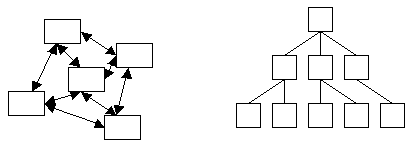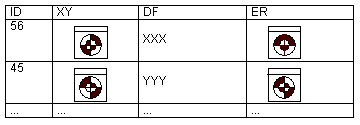Database Models
Database systems can be based on different data models or database models respectively. A data model is a collection of concepts
and rules for the description of the structure of the database. Structure of the database means the data types, the constraints
and the relationships for the description or storage of data respectively.
The most often used data models are:
| Network Model and
Hierarchical Model
|
The network model and the hierarchical model are the predecessors
of the relational model. They build upon individual data sets and are able
to express hierarchical or network like structures of the real
world.
|
| Relational Model |
The relational model is the best known and in today’s DBMS most often implemented database model. It defines a database as
a collection of tables (relations) which contain all data.
This module deals predominantly with the relational database model and the database systems based on it.
|
| Object-oriented Model |
Object-oriented models define a database as a collection of objects with features and methods. A detailed discussion of object-oriented
databases follows in an advanced module.
|
| Object-relational Model |
Object-oriented models are very powerful but also quite complex. With the relatively new object-relational database model
is the wide spread and simple relational database model extended by some basic object-oriented concepts. These allow us to
work with the widely know relational database model but also have some advantages of the object-oriented model without its
complexity.
|
 Network Model and Hierarchical Model
Network Model and Hierarchical Model Relational Database Model
Relational Database Model Schematic Representation of a Object-oriented Database Model
Schematic Representation of a Object-oriented Database Model Schematic Represenation of the object-relational Database Model
Schematic Represenation of the object-relational Database Model